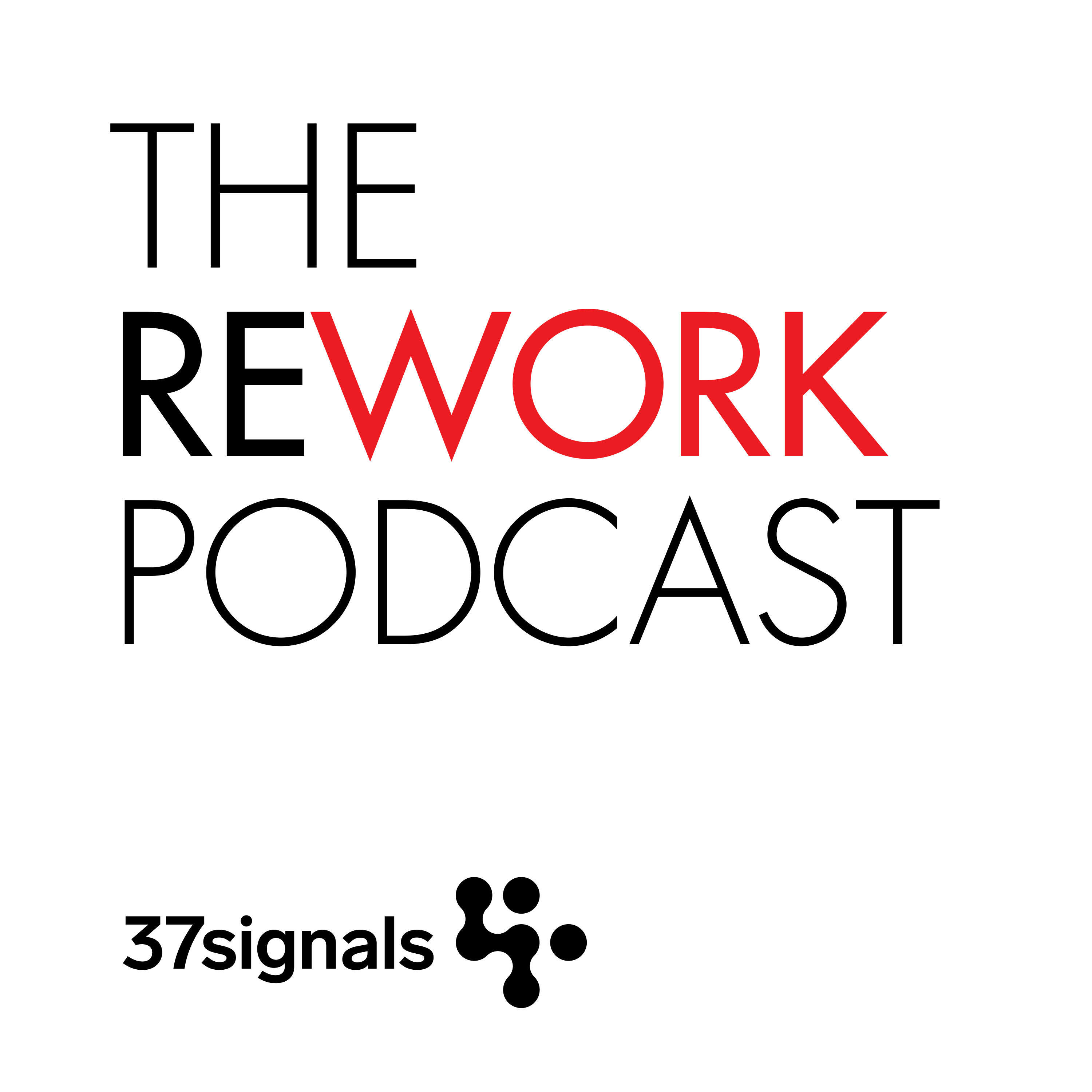Writing a Pitch
If you've been following the Rework podcast, you're undoubtedly acquainted with the concept of Shape Up, a cornerstone of 37signals' approach to product development.In this episode, we delve into a core component of Shape Up: the delicate art of crafting a pitch.
Join Rework host Kimberly Rhodes as she sits down with 37signals founders, Jason Fried and David Heinemeier Hansson for a conversation encompassing everything from the essence and purpose of a pitch to the step-by-step process of constructing a finely tuned pitch. Listen in as Jason and David walk listeners through Shape Up's five-point compass for an effective pitch: problem, appetite, solution, rabbit holes, and no-gos, plus insight on how to use “tracer bullets” to manage the balance between scope and execution while avoiding the pitfalls along the way. Check out the full video episode on YouTube
Show Notes: [00:00] - Kimberly introduces listeners to Shape Up, and the topic of the day: "writing a pitch" for product development.[00:34] - Jason shares what a pitch is and its purpose in product development. [02:16] - David emphasizes a crucial counterpoint to common practices at most organizations, highlighting the two common pitfalls.
[03:12] - Striking a balance: providing boundaries without stifling creativity.[04:05] - The key innovation of a Shape Up and the importance of avoiding extremes of over-specification or vague one-liners in your pitch.[05:44] - Jason shares who can write a pitch, and the distinction between throwing out ideas and formalized pitches. [07:47] - David introduces listeners to the concept of "framing" before pitching.[09:28] - Why it’s vital to distinguish between identifying a problem and crafting a pitch.
[10:25] - Effective pitch creation requires contextual awareness to devise realistic solutions.[11:46] - Pitched solutions are more about direction than detailed execution—the true execution and implementation are the responsibility of the assigned team. [13:06] - Pitching is a powerful tool for attracting and nurturing independent decision-makers.[14:54] - The magic of deferring decisions until the implementation stage.
[15:46] - Pitching projects is a blend of autonomy, mastery, and purpose, aligning with Daniel Pink's principles of employee satisfaction.[17:21] - Shape Up's five key details for making a pitch: problem, appetite, solution, rabbit holes, and no-gos. [18:23] - Rabbit holes: tempting yet treacherous distractions that offer the illusion of progress. Why unveiling these traps early is essential. [20:08] - David shares an example of a recent project using a time zone auto completer. [21:15] - A "science project" - the macro version of a rabbit hole.[22:41] - How a "tracer bullet" or "traceable" helps the 37signals team understand a project's feasibility and complexity leading through a small investment of information gathering. [24:29] - Why a "tracer bullet is crucial for prioritizing projects, using an example of using a tracer to explore billing in other currencies and how it provided clarity on the project scope and timeline.[25:40] - Next week's episode of Rework will focus on the "Betting Table" and how the decision-making process unfolds to choose which pitches to work on. In the meantime, don’t forget you can still enter #



